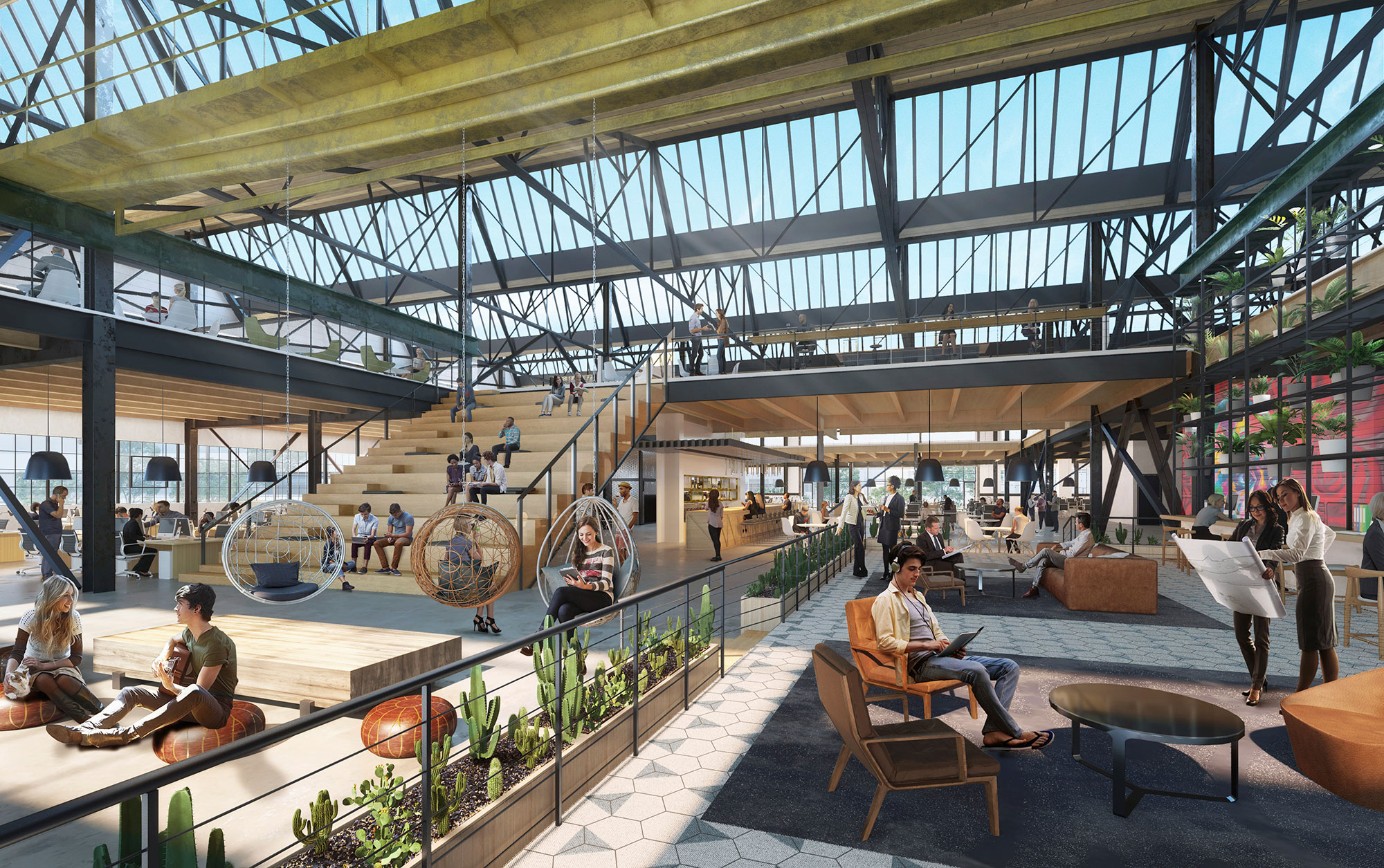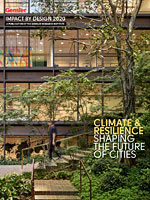For buildings that cannot be adapted easily or have no cultural or historic value, salvaging and repurposing the materials can prevent unnecessary waste. Deconstruction, rather than demolition, often saves 95% of a building’s materials. In many older European cities, materials have upcycled through buildings for centuries. Encouraging this sort of reuse globally can have a huge impact; according to the U.S. Environmental Protect Agency (EPA), the American built environment creates over half a billion tons of debris annually — 90% of this stems from demolition.

The design proposal for 888 North Douglas for Hackman Capital Partners rehabilitates a 550,000-square-foot site comprised of four warehouse and manufacturing buildings while preserving original industrial details such as catwalks, railway corridors, high bays, manufacturing cranes, and sawtooth skylights.
The flexible design of new buildings can also extend a structure’s lifespan with an enhanced ability to easily adapt to various uses. Using a standard size grid and relatively open floor plan will help projects adapt to varied future functions without much demolition. The cast-iron loft buildings of New York’s SoHo neighborhood have been continually adapted for 150 years because of their beauty and flexibility. Preserving these structures conserves the embodied energy of the material while also reinforcing the cultural heritage of the neighborhood.
In Impact by Design 2020 we introduce Strategies for Climate Resilience: a collection of six major areas that have the greatest potential for positive climate impact in the coming years.
